Ukrainian Movies – 15 Best Ukrainian Films
Ukrainian cinema has a very long tradition and big names. It was born in Kharkov in 1896, and its impressive heyday came in the 1960s and 1970s, with works by Sergei Parajanov (of Armenian descent), Kira Muratova and Leonid Osyka. Prestigious magazines that bring together the film community are Novyny Kinoekran, published since 1961, Kino-Theater or Kino-Wheel, established in 1995. We present a selection of outstanding Ukrainian films.
The beginning of Ukrainian cinematography is connected with the person of Alfred Fedetsky, who began making documentaries in Kharkov in the late 19th century. The first official film institution was established in 1922; it was the All-Ukrainian Film and Photo Board. The 1920s also saw the birth of Ukrainian studios: in Yalta, Odessa and Kiev. One of the most important artists for the early development of Ukrainian cinema was Alexander Dovzhenko, juxtaposed with such great names as Sergei Eisenstein. The Ukrainian Chronicle-Documentary Film Studio was also established before World War II.
The most fruitful period in the development of the country’s cinematography was the 1960s and 1970s. It was then that Sergei Parajanov, a great director who was persecuted by the Soviet regime, made his legendary films here. After being arrested in 1973 for preaching artistic independence, he spent four years in prison, despite the protests of influential people from the cultural world. His apartment in Kiev was confiscated and he was banned from staying in the city. In 1991, Ukraine regained its independence. This was the beginning of private production companies, but also a period of stagnation in cinema. The new millennium brought successes from a younger generation of filmmakers, such as Oksana Bairak and Stepan Kowal. We present a selection of the best Ukrainian movies.
Ukrainian films
1. “Shors” (“Shchors”), 1939
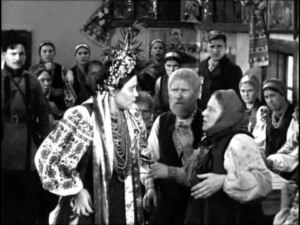
“Shors”, directed by Alexander Dovzhenko, is one of the first significant films of Ukrainian cinematography. The picture is set in 1919 in Ukraine, during the civil war. The title is the name of the main character – Colonel Nikolai Shchors, who was the Ukrainian commander of the Bohun regiment, part of the Red Army. Shchors organized partisans against the forces of Symon Petlura, as well as units of the Polish Army. He died at the age of 24.
Undoubtedly, Dovzhenko’s propaganda movie, commissioned by Stalin, unexpectedly turned out to be one of the greatest achievements of domestic cinema. It went down in history as a great historical spectacle, with an outstanding performance by Yevgeny Samoylov. In the interpretation of this actor, the hero became not so much a man of the people, but a leader of the intelligentsia. One of the most important scenes of the film is the hero’s speech to Petlura’s captured soldiers. However, it should be noted that both “Shors” and “Bohdan Khmelnitsky” (also a historical epic) by Igor Savchenko were part of Soviet propaganda and contained clear anti-Polish accents.
2. “Shadows of Forgotten Ancestors” („Tini zabutykh predkiv”), 1965
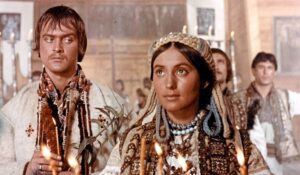
This is one of Sergei Parajanov’s most important films. The director made “Shadows of Forgotten Ancestors” based on a short story by Mikhail Kociubynsky. This is a beautiful, poetic story about the love of Ivan and Marichka, who against all odds decide to be together. The film is set in the Hutsul village of Krzyworównia, in the Carpathian Mountains. Here Parajanov created a wonderful portrait of the rich culture, beliefs, customs and beautiful landscapes of the Hutsul region, using a painterly composition of frames. Much credit for this went to cinematographer Yuri Illenko.
The picture impresses with its use of folklore – both in the visual layer, as well as in sound and music. There are elements of the Hutsul dialect, Hutsul folk songs – kolomyjki, rites and rituals accompanying holidays and festivities. The movie made Ukrainian cinema famous around the world. However, although the work received numerous foreign awards, the director could not travel outside the USSR to receive them.
3. “Brief Encounters”, („Korotkiye vstrechi”), 1967
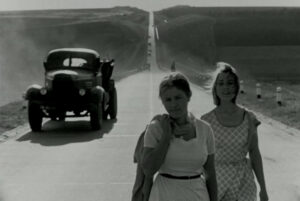
Ukrainian films have also gained international recognition thanks to Kira Muratova. “Brief Encounters” is the independent debut of the author, who began her career with her future husband Alexander with the film “By the Steep Ravine”. The melodrama tells the story of Nadia, a young village girl in love with her employer’s husband, a handsome geologist. The film starred Nina Ruslanova, Vladimir Vysotsky and the director herself (in the role of Valentina, Maxim’s wife). Muratova here showed a female perspective on love relationships. In the memories of the heroines we see the image of a romantic, man with a guitar, working on the imagination of women.
Muratova’s picture referred stylistically to the European New Wave, which is why, despite the fact that it did not deal with political themes, it was blocked by Soviet censors.
4. “The Long Farewell” („Dolgie provody, 1971)
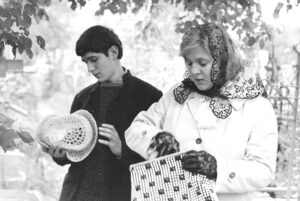
Another important Ukrainian film, and another entry in Muratova’s oeuvre. “The Long Farewell” is a picture that waited many years for its premiere. It took place only in 1987. The picture depicts the relationship between a single mother and her adolescent son. The boy, after spending the vacations with his father, begins to distance himself from his mother. One day a woman finds his letter to his father, in which Sasha reveals that he no longer wants to live with his mother. The script, written by Natalia Ryazantseva, did not please the censors, who accused the film of falsifying the image of the Soviet world. The film starred Oleg Vladimirsky, Zinaida Sharko, Yuriy Kayurov and Tatyana Mychko, among others.
“The Long Farewell” not only reflects on the universal problem of generational conflict, but also shows the impact of the heartless Soviet system on people’s personal fates. It depicts a hopeless, difficult everyday life in which people do not trust each other, so they are doomed to loneliness and isolation.
5. “The Stone Cross” („Kaminnyy khrest), 1968
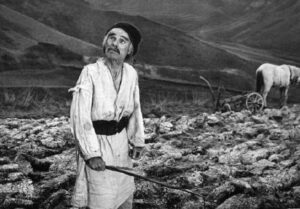
This film was the debut of Leonid Osyka, another important Ukrainian director. The picture was based on short stories by Vasyl Stefanyk from 1900. The film starred Borislav Brondukov, Daniil Ilchenko and Yekaterina Mateyk. The film is set in the late 19th century. It is the story of a farmer who decides to emigrate for work to Canada. Before leaving, he says goodbye to his family and villagers.
Osyka shows in “The Stone Cross” the immense human dilemma of abandoning his beloved homeland. It is an opportunity to present the richness of Ukrainian folk culture. The attention of critics was especially drawn to the original style of this cinema: paradocumentary and at the same time poetic.
6. “The White Bird Marked with Black”, („Bilyy ptakh z chornoyu vidznakoyu”), 1971
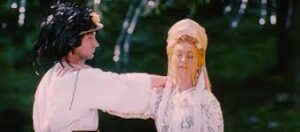
Yuri Ilyenko also made a major contribution to Ukrainian cinema. His “The White Bird Marked with Black” is a movie set in the late 1930s and early 1940s on the border of Bukovina and Romania. It is a cinema depicting the dramatic history of Ukrainian peasants. It tells the story of the Zwonar family, which tries to make a living by farming and playing music at village celebrations. However, neither of these activities is enough to meet their basic needs, so their four sons must go to serve a wealthy farmer. When the Red Army enters Ukraine, the brothers’ fates are forever separated.
“White Bird Marked with Black” is a film clearly inspired by Parajanov’s cinema. The screenwriter of the picture and at the same time the actor playing the main role was Ivan Nikolaychuk, who previously starred in “Shadows of Forgotten Ancestors”. The dramatic story is accompanied by painterly cinematography and a beautiful depiction of Ukrainian folklore.
7. “Biryuk”, 1977
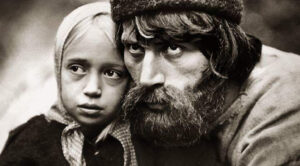
This Ukrainian film was presented at the Berlin Festival, where it received widespread acclaim. “Biryuk,” directed by Roman Balayan, is an outstanding adaptation of an excerpt from Ivan Turgenev’s prose novel “The Hunter’s Notes.” The Birjuk of the title (Mikhail Golubovich) is otherwise known as the “Lone Wolf,” a Foma grove keeper who guards the lord’s forest while single-handedly raising two children: his ten-year-old daughter Ulita and an infant. One day a hunter surprised by a terrible storm comes to his hut. At the same time, Foma catches in the act a peasant who, due to extreme poverty, steals a tree in the forest. The film is accompanied by a motto from Turgenev, which is a strong indictment of the inhuman law of serfdom.
“Biryuk” is an extraordinarily original work, almost entirely told through images, with very few words. The director brilliantly depicted the strong relationship between man and nature, through visual and aural expression. The cinematography of Wiłon Kaluta plays a huge role here, especially the handling of light that gives contours to the dark frames. All this brings out the immense human drama unfolding before the viewer’s eyes.
8. “The Bell of Chernobyl” („Kolokol Chernobylya”), 1987

“The Bell of Chernobyl” is a distinguished documentary movie by Rolan Sergeyenko, depicting the dramatic events of 1986. On April 26 of that year there was a disaster at the Chernobyl nuclear power plant in Ukraine, which caused massive contamination over an area of up to 146,000 square kilometers. At the time, 350,000 people were displaced. The film is extremely moving, especially because it was created, so to speak, “hot”: from May to June 1986, and some shots were added to the whole in September. It is a picture of unimaginable tragedy and, at the same time, of the disbelief of ordinary people, at what happened, and even rebelling at having to leave their own homes.
9. “The Asthenic Syndrome” („Astenicheskiy sindrom”), 1989
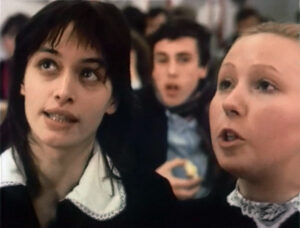
One of the most important Ukrainian films, Muratova’s “The Asthenic Syndrome” was awarded the Silver Bear at the Berlin IFF. The director, after a long hiatus enforced by Soviet censorship, returned to work and created a picture of social decay during perestroika. The film consists of two novellas: the protagonist of the first is a grieving widow, while the second tells the story of a teacher suffering from narcolepsy, a disorder involving uncontrolled coma attacks.
Muratova’s work is a multi-level metaphor for the decay of the decades-long regime, but also for its destructive impact on the condition of society. Above all, it is a moral diagnosis, an indictment of the system’s destruction of both the individual and the entire enslaved collective.
10. “A Prayer for Hetman Mazepa” („Molitva za getmana Mazepu, 2002)
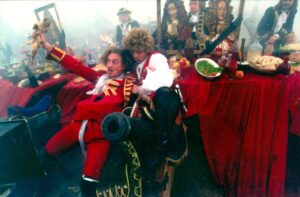
Among the Ukrainian films of the first decade of the 21st century is “A Prayer for Hetman Mazepa,” directed by Yuri Ilyenko. It is a historical-fantasy fresco, whose protagonists are Peter I, Charles XII and ataman Mazepa – three figures who had a significant impact on the history of Eastern Europe. The action of the film takes place over the course of several hundred years, although much space is given to the events of 1709, especially the battle of Poltava. The picture was a kind of answer to “With Fire and Sword” directed by Jerzy Hoffman. Ilienko shows here the history of the Cossacks, several decades after the Khmelnytsky uprising – its rich culture, customs, but also its separateness from other nations and striving for independence.
Hetman Ivan Mazepa, in an attempt to become independent from tsarist Russia, fled to Sweden, where he formed an alliance with King Charles XII. For his rebellion against the tsar and his agreement with Sweden, Mazepa was placed under a curse by the Orthodox Church. This was because Peter I accused him of intending to annex Cossack lands to the Republic and converting from Orthodoxy to Catholicism. The film was considered anti-Russian in Russia and was banned there for some time. The budget of “A Prayer for Hetman Mazepa” was huge, amounting to $2 million, but the historical spectacle, due to its overly artistic themes, was not fully understood and well received. The role of Mazepa is played in the film by three actors, at different stages of life, including Bogdan Stupka.
11. “Aurora” („Avrora”), 2006

“Aurora,” directed by Oksana Bayrak, is a poignant melodrama whose main character is a 12-year-old girl struggling with the serious consequences of radiation exposure after the Chernobyl nuclear power plant explosion. Aurora dreams of becoming a ballerina, but her deteriorating health makes it impossible to function normally. Eventually, the girl is transported to the United States, where she is to undergo a complicated operation. On the spot, however, it turns out that the state has not financed the surgery. In the hospital, Aurora meets Nik Astachov, a great ballet dancer who is in drug treatment. This meeting will completely change the man’s life. The film stars Anastasia Zurkalova, Dmitriy Kharatyan and Eric Roberts.
12. “Two in One” („Dva v Odnom”), 2007

The 2007 picture “Two in One” is another film by Kira Muratova. The complicated plot of the film takes place simultaneously on three planes: real, theatrical and film. On each level, we are presented with the story of a theater troupe, preparing for a premiere, in which a murder suddenly occurs. Interestingly, the play is also part of Muratova’s film. The leading roles are played by Renata Litvinova, Natalia Busko and Bogdan Stupka.
“Two in One” is a movie that juxtaposes the conventions of drama, crime fiction and comedy. Here we are dealing with the category of absurdity, typical of Muratova’s cinema, with which the director most often describes the contradictions inherent in the world.
13. “The Tram No. 9 Goes”, („Shyol tramvay N° 9”), 2002

Ukrainian film awarded the Silver Bear, directed by Stepan Koval. This is a short animation in which we see the story of a seemingly ordinary route of a certain streetcar. In its carriages people of various professions meet. They go to different places and talk about ordinary things: serials, work, everyday troubles. The film contains many very funny gags. We see typical situations and the ills of overloaded public transportation. However, there is also a criminal intrigue lurking in the background. After all, the streetcar features a pickpocket, a paid murderer and a war veteran. In addition to the aforementioned award, the film was also nominated for the Golden Bear and won an award at the Krakow Film Festival.
14. “Mamay”, 2003
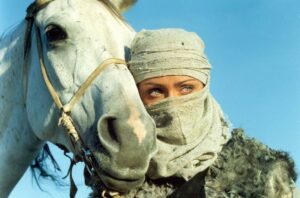
Olees Sanin’s film is the story of the Cossack Mamay. The picture refers to two traditions present in the history of Ukraine: Cossack dumkas and dumkas and Tatar songs. The movie is set on the beautiful Ukrainian steppes, and the historical plot is intertwined with a romantic thread. The wounded Mamay finds himself in the care of the beautiful Tatar woman Omay, which ends in a great but forbidden love. The lead roles were played by Andriy Bilous and Viktoriya Spesivtseva.
“Mamay” was the first Ukrainian film submitted to the Academy Awards. Sanin’s poetic work is based on two literary models: “Duma about Escape of the Three Brothers from Azov” and “Song of the Dervish.”
15. “My Thoughts Are Silent”, („Moi dumky tykhi”), 2019
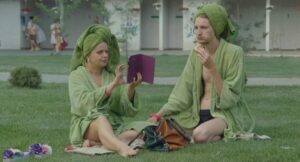
“My Thoughts Are Silent” is a Ukrainian film that has gained great popularity in Ukraine. Its director is Antonio Lukich. It’s the story of a young Ukrainian from Kiev, dreaming of a better life and moving to Canada. Vadim’s (Andryi Lidagovskiy) plan has a chance to come true if he succeeds in an original project. Commissioned by a Canadian company, he must record the sounds of animals living in the Western Carpathians. However, it turns out that his mother (Irma Vitovska-Vantsa) will accompany him on a peculiar natural history trip, which triggers a series of funny and absurd events. Meanwhile, Wadim is tasked with finding an extinct species of duck.
Famous ukrainian series:
“Servant of the People” (TV Series 2015 – 2019)

“Servant of the People” is a Ukrainian series whose main character is an ordinary teacher. His life completely changes when he is elected president of the country. The series is kept in the style of a political comedy. Vasily Petrovich Goloborodko tries to reform the state, free it from corruption and build a good future for his nation. At the same time, the hero wants to remain an ordinary man. The lead role was played by Vladimir Zelenski, a former actor and comedian, and now President of Ukraine, heroically fighting for the independence of his own country.
Share: “Ukrainian Movies – 15 Best Ukrainian Films” with your friends.
